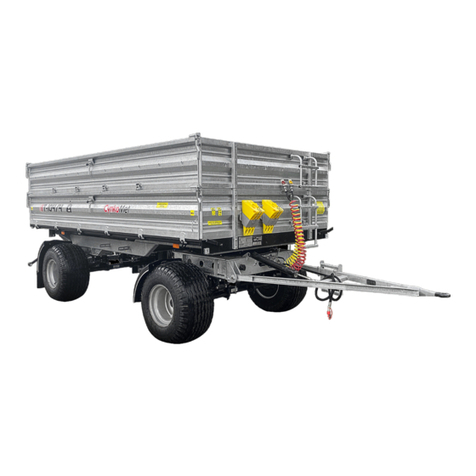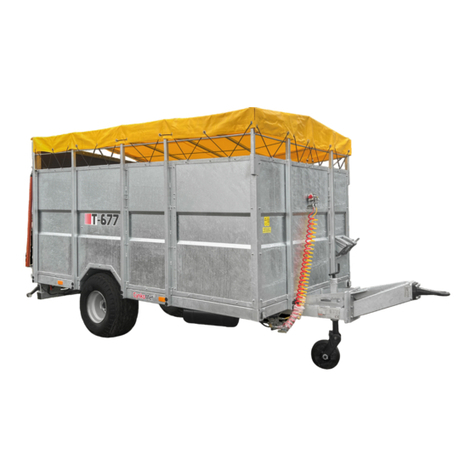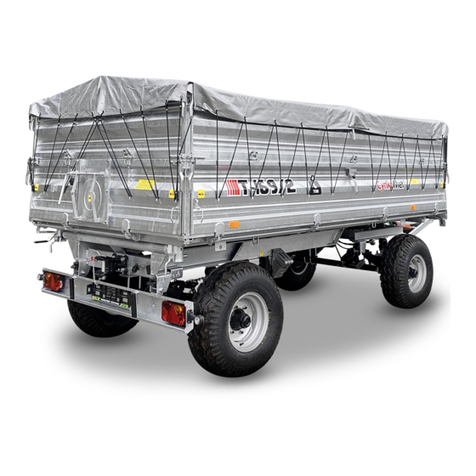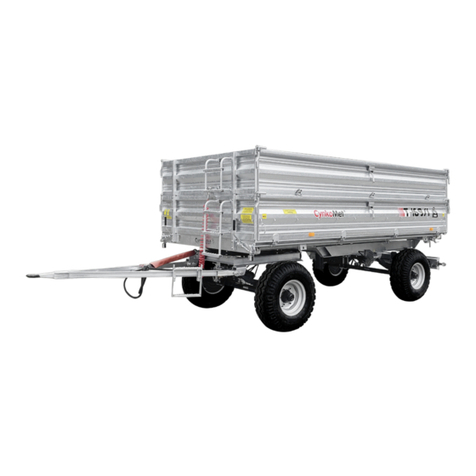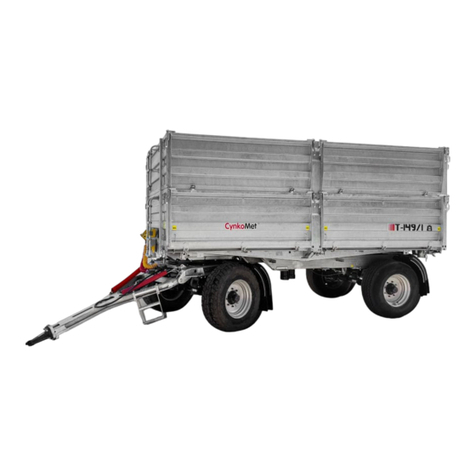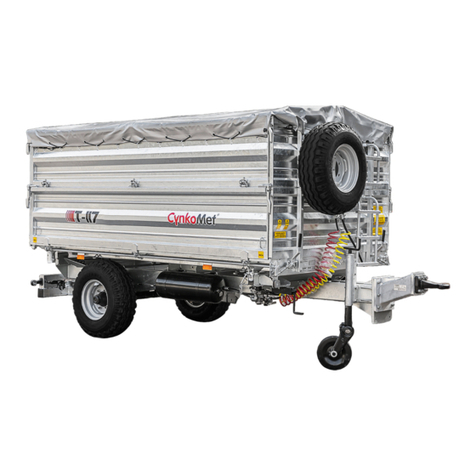2. Purpose of the spreader
The spreader is a universal agricultural machine designed for spreading
manure of any kind, lime, peat and compost, after mounting extensions (the
mounting method is further in the manual - Section 4,2,7 Extensions,
Conveyor) and replacing the rear wall adapter it can be used as a volumetric
dump trailer. Suspension springs on 2 axles ensure optimal driving
properties. The adapter with 4 vertical shafts (N-221/3-3) or 2 horizontal
shafts (N-221/4-3) guarantees precise application of fertilizer. The machine is
also equipped with a hydraulic wall, which allows you to adjust the dosage of
the material located on the loading box. The spreader consists of a support
frame, floor with a thickness of 4mm and a wall with a height of 0.8 meter,
which are constructed from sheet metal with a thickness of 2mm. The N-
221/3-3 spreader may be equipped with a deflector (a.k.a. spread limiter
deflector), which provides a wide range of potential operating settings,
guaranteeing precise application of the fertilizer, and the deflector itself
provides protection for adapters.
The brake system and lighting and signaling system meet the requirements
arising from the “Regulation of the Minister of Infrastructure of 31 December
2002 on technical conditions of vehicles and the range of their necessary
equipment”.
Failure to follow the transport and loading of goods specifications
described by the Manufacturer and the rules on road transport in force in the
country in which the spreader is used, will void the warranty service and is
regarded as use of the machine incompatibly with its purpose.
The spreader is adapted to cooperation with agricultural tractors equipped
with an external hydraulic system and lower trailer hitch with capacity of 2000
kg.






